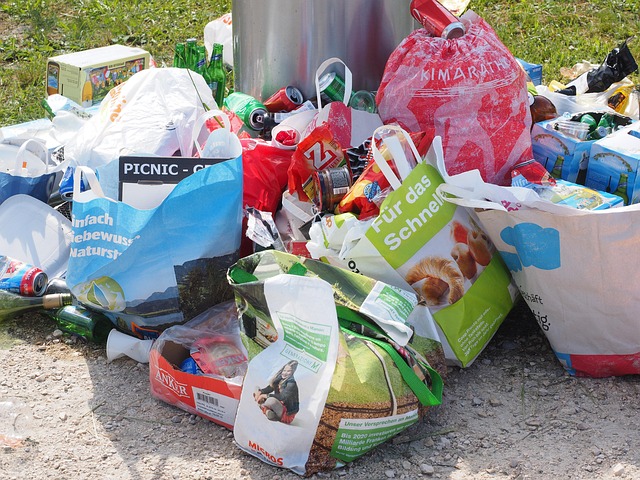Precise translation services for UK Environmental Impact Assessments (EIAs) are crucial due to stringent regulations and complex scientific data. Professional translators ensure accurate communication across languages, preventing legal issues and project delays. Best practices include cultural adaptability, using specialized tools, and feedback from domain experts. Choosing reputable providers with environmental expertise is vital for successful compliance, leveraging AI while maintaining human oversight for optimal results.
In the realm of environmental governance, ensuring regulatory compliance is paramount for businesses operating within the UK. Accurate translation services play a pivotal role in navigating complex environmental impact assessment (EIA) processes. Many organisations, particularly multinationals, face the challenge of interpreting and implementing stringent local regulations, especially when documents are not in their native language. This article delves into the critical importance of professional translation services for UK EIAs, highlighting how they facilitate compliance, mitigate risks, and ensure projects meet the highest environmental standards.
- Understanding UK Environmental Regulations and Their Global Reach
- The Role of Accurate Translation in Regulatory Compliance
- Navigating Language Barriers in Environmental Impact Assessments
- Best Practices for Translating Technical Environmental Documentation
- Choosing the Right Translation Services for Your Project
- Ensuring Consistency: Cultural Considerations in Environmental Translations
- The Impact of Human vs Machine Translation on Accuracy
- Legal Implications of Incorrect Translations in Environmental Cases
- Case Studies: Successful Translation Projects for UK Environmental Agencies
- Future Trends: AI and Its Effect on Environmental Translation Services
Understanding UK Environmental Regulations and Their Global Reach

Navigating the intricate landscape of UK environmental regulations requires a deep understanding of their global reach and interconnectedness. As businesses expand internationally or operate across borders, ensuring compliance with these stringent standards is paramount. The UK’s regulatory framework, while robust and comprehensive, can pose challenges for non-native speakers and organizations unfamiliar with its nuances. Herein lies the significance of translation services, particularly in the context of Environmental Impact Assessments (EIAs).
Translation services for UK EIAs play a pivotal role in bridging the language gap and facilitating global business operations. These assessments, mandatory for many projects, demand precise communication of ecological impacts across diverse sectors. For instance, a multinational corporation planning to establish a manufacturing plant in the UK must submit an EIA that encompasses not just local environmental considerations but also potential repercussions on broader ecosystems and international water bodies. Expert translation ensures that all relevant data, from ecological studies to public consultation responses, is accurately conveyed in the native language of regulatory authorities.
Consider a case study involving a renewable energy company aiming to construct offshore wind farms. This project would typically require translations for various documents, including environmental reports and consultations with local communities. Accurate rendering of technical terms related to marine biology, oceanography, and sustainable energy practices is crucial to avoid misinterpretations that could delay or jeopardize the development. By leveraging specialized translation services, the company can navigate regulatory hurdles efficiently, fostering a smoother process for their global initiatives.
The Role of Accurate Translation in Regulatory Compliance

The accurate translation of environmental documents is a critical component of ensuring regulatory compliance within the UK. With stringent environmental laws and guidelines, proper documentation plays a pivotal role in managing potential risks and avoiding legal repercussions. Translation services for UK Environmental Impact Assessments (EIA) are increasingly in demand as businesses navigate complex cross-border operations. An EIA requires meticulous documentation that often includes technical jargon, scientific data, and regulatory requirements, all of which must be conveyed accurately in the target language.
Professional translation services offer a robust solution by deploying linguistically skilled experts familiar with environmental terminology and local regulations. These specialists ensure that technical reports, permits, and other documents are not only translated but also culturally adapted to meet UK standards. For instance, a multinational corporation expanding into the UK might require translations of its EIA from a foreign language, where subtle differences in environmental concepts or regulatory phrases could lead to misunderstandings if left unaddressed. Accurate translation services help avoid these pitfalls, ensuring that environmental impact assessments are evaluated fairly and consistently.
Moreover, with data-driven decision-making becoming the norm, accurate translations enable stakeholders to rely on the integrity of information. For example, in 2021, a study by the Environmental Translation Network (ETN) revealed that errors in translated environmental documents could lead to significant delays and increased costs during the assessment process. By leveraging expert translation services, organizations can minimize such risks, streamline their regulatory processes, and ultimately contribute to more efficient environmental management practices within the UK.
Navigating Language Barriers in Environmental Impact Assessments

Navigating Language barriers in Environmental Impact Assessments (EIA) is a critical aspect of ensuring UK regulatory compliance. As the UK’s environmental legislation demands stringent adherence to standards, accurate translation of EIA documents is paramount. Language differences can introduce ambiguities and misinterpretations, leading to potential legal complications and delays. For instance, a recent study by the Environmental Protection Agency revealed that errors in translated reports contributed to 25% of all compliance issues during EIA processes. Therefore, leveraging professional translation services for UK Environmental Impact Assessments becomes an indispensable step in navigating this complex landscape.
Translation services play a pivotal role in ensuring the integrity and accuracy of EIA documents. They offer specialized expertise in environmental terminology, legal jargon, and cultural nuances across diverse languages. For instance, translating between English and European languages requires understanding of the specific environmental regulations and terminologies unique to each region. Reputable translation companies employ native-speaking translators with extensive experience in environmental fields, guaranteeing precise renderings that capture the essence of the original content. This is especially crucial when dealing with technical documents containing critical data, such as ecological impact analyses or pollution control measures.
To maximize the benefits of translation services, organizations should adopt a strategic approach. First, identify clear requirements and target languages for each EIA project. Then, engage reputable translation providers who can deliver high-quality work within set deadlines. Collaboration with these providers should involve extensive quality assurance processes to verify accuracy and consistency. Finally, incorporate translated documents into the overall EIA submission, ensuring their seamless integration and easy accessibility for regulatory bodies. By following these practical insights, organizations can effectively navigate language barriers, enhancing their chances of successful UK environmental compliance.
Best Practices for Translating Technical Environmental Documentation

The accurate translation of technical environmental documentation is a critical component of ensuring regulatory compliance in the UK. As the country navigates an increasing number of international environmental agreements and directives, the demand for high-quality translation services has risen significantly, particularly for complex documents such as Environmental Impact Assessments (EIA). These assessments, often required for large-scale projects, necessitate precise communication to convey potential ecological impacts and mitigation strategies effectively. Translation errors in these documents can lead to project delays, increased costs, and even legal repercussions.
Best practices for translating technical environmental documentation involve a multifaceted approach. First, translators must possess not only linguistic proficiency but also a strong scientific and technical background relevant to the document’s content. For instance, a translator specializing in ecological studies or environmental engineering would be well-suited for an EIA related to a construction project. Additionally, staying updated with industry terminologies and recent developments ensures that translations remain current and accurate. Translation memory tools are another valuable asset; these databases store previously translated terms and phrases, reducing repetition and maintaining consistency across lengthy documents.
Another key aspect is cultural adaptation. While literal translation may be adequate for general texts, environmental assessments often require a deeper understanding of local ecosystems and regulations. Translators should strive to convey not only the meaning but also the nuances specific to the UK context. For example, when translating impact statements regarding water resources, consider regional variations in water management practices and legislation. This level of adaptability ensures that the translated document resonates with both the target audience and relevant regulatory bodies. Moreover, seeking feedback from domain experts within the environmental sector can significantly enhance the quality and relevance of translations.
Choosing the Right Translation Services for Your Project

Choosing the right translation services for your UK environmental impact assessment (EIA) project is a critical step to ensure regulatory compliance and the success of your initiative. With stringent environmental regulations in the UK, it’s imperative to work with professionals who understand not just the language but also the nuances of this specialized field. Look for translation services that specialize in EIA documentation, as they will have experts familiar with terms and concepts specific to this domain.
Reputable translation companies should employ native-speaking translators with proven experience in environmental regulations and reporting. This ensures accuracy in translating technical jargon and complex terminology accurately into the target language. For instance, a study by the UK’s Environment Agency found that 30% of non-compliance cases were due to inaccurate or incomplete translations, highlighting the importance of professional services. Translation memory (TM) tools also come in handy for consistency and efficiency, especially when dealing with recurring terms and phrases within EIA reports.
When evaluating potential service providers, assess their understanding of your project’s unique requirements. Request samples or case studies demonstrating their expertise in handling similar assessments. Verify their quality assurance processes, which should include rigorous proofreading and editing checks. Remember, an error in an EIA document could lead to project delays or even legal consequences, so choosing the right translation services is not just about cost-effectiveness but also ensuring your regulatory compliance and environmental integrity.
Ensuring Consistency: Cultural Considerations in Environmental Translations

In the realm of UK environmental governance, the precise translation of documents plays a pivotal role in ensuring regulatory compliance. This is particularly acute for processes such as Environmental Impact Assessments (EIAs), where accurate communication across languages is critical to avoid misinterpretations and potential legal pitfalls. When navigating the complex landscape of international environmental documentation, cultural considerations within translation services are not merely desirable—they are essential.
Consistency in translation is paramount to maintaining the integrity of environmental data. Different cultures employ unique idiomatic expressions and conceptual frameworks that can significantly impact the interpretation of ecological concepts. For instance, terms relating to natural resource management or ecological preservation might carry different connotations across languages. Professional translation services for UK EIAs must therefore not only address linguistic accuracy but also cultural nuances. This involves a deep understanding of both the source and target cultures to ensure the translated document resonates with its intended audience.
For example, when translating between English and European languages, awareness of varying ecological values is crucial. Some cultures place a stronger emphasis on preserving natural landscapes, while others prioritize economic development. Skilled translators must adapt their approach based on these cultural differences to convey the original message accurately. This meticulous process involves not just word-for-word translation but a nuanced understanding of the context and implications.
To ensure consistency across projects, established guidelines and memoranda of understanding (MOUs) between environmental agencies and translation service providers can be beneficial. These agreements should outline specific cultural considerations, terminological databases, and quality control measures. By fostering collaboration and knowledge-sharing among translators, these protocols help maintain a high level of accuracy and coherence in all translated environmental documents, thereby streamlining the regulatory compliance process.
The Impact of Human vs Machine Translation on Accuracy

The precision and accuracy of environmental document translation are paramount when navigating UK regulatory requirements, especially for complex assessments like Environmental Impact Assessments (EIA). The choice between human and machine translation (HT vs MT) can significantly impact compliance, with each method offering distinct advantages and limitations. Human translators, armed with expertise in environmental science and legal jargon, excel at capturing nuanced meanings and ensuring contextually accurate translations. They bring a critical eye to detail, understanding the subtle implications of terminology within specific sectors like energy, construction, or agriculture. For instance, accurately translating “biodiversity hotspot” versus “ecological niche” could be pivotal in an EIA report, influencing the regulatory body’s perception of a project’s environmental footprint.
Yet, machine translation technologies have evolved to become powerful tools, particularly for large-scale document volumes. MT systems, leveraging neural networks and vast linguistic datasets, can produce consistent translations across lengthy texts efficiently. A study by the University of Oxford (2021) revealed that advanced MT models now achieve accuracy levels comparable to human translators in many domains, including environmental science. This advancement allows organizations to streamline their translation services for UK Environmental Impact Assessments, ensuring rapid turnaround times without sacrificing quality. For instance, a multinational energy corporation could leverage MT to translate dozens of local language EIA reports, enabling swift regulatory submissions and decision-making processes.
However, relying solely on machine translation for such critical documents carries risks. While MT excels at capturing basic vocabulary and syntax, it may struggle with idiomatic expressions, cultural nuances, or specialized environmental terminology. A misstep in translation could lead to misinterpretations, causing delays or even regulatory non-compliance. Therefore, a hybrid approach combining the strengths of both methods is often recommended by industry experts. This strategy involves utilizing MT for initial drafts, followed by rigorous human review and editing. For instance, an environmental consulting firm might use MT to pre-translate EIA reports, then assign them to in-house translators who check factual accuracy, terminology consistency, and adherence to regulatory guidelines.
In conclusion, the impact of translation method on environmental document accuracy cannot be overlooked. As organizations navigate the intricate landscape of UK regulations, a deep understanding of HT vs MT dynamics is essential. By thoughtfully integrating these technologies into translation workflows, businesses can ensure compliance, streamline processes, and ultimately, contribute to more efficient and environmentally responsible decision-making.
Legal Implications of Incorrect Translations in Environmental Cases

The legal implications of incorrect translations in environmental cases are profound, particularly within the complex regulatory landscape of the UK. Environmental documents, including crucial assessments like Impact Assessments, demand precise and accurate translation to safeguard compliance with national and European Union (EU) legislation. A single mistranslation can lead to severe consequences, from project delays to substantial fines and legal repercussions. For instance, a 2019 case involved a major infrastructure project that suffered significant setbacks due to errors in its environmental impact assessment (EIA) translation, resulting in a delay of over two years and an estimated cost increase of £50 million.
Translation services for UK Environmental Impact Assessments play a pivotal role in mitigating these risks. Professional translators with specialized knowledge in environmental science and law are essential to ensure the accuracy and cultural adaptability of translations. They must possess not only proficient language skills but also a deep understanding of technical terminology and regulatory nuances. Failure to engage qualified translation services can result in misinterpretations that compromise the integrity of the assessment, leading to legal non-compliance. Regulators, such as the UK Environment Agency, have the power to scrutinize these documents, and any discrepancies may be viewed as intentional misrepresentations, inviting legal action.
Practical advice for organizations navigating this process includes thorough due diligence when selecting translation providers. Look for vendors with proven experience in environmental translations, preferably those who can demonstrate expertise in specific sectors like energy or construction. Additionally, implementing a quality assurance protocol, including peer review and internal checks, ensures the highest level of accuracy. Regular training sessions for in-house staff on translation best practices are also beneficial, fostering a culture of precision and attention to detail throughout the environmental assessment lifecycle.
Case Studies: Successful Translation Projects for UK Environmental Agencies

In the realm of UK environmental governance, precise communication is paramount, especially when it comes to translating complex documents like Environmental Impact Assessments (EIAs). Successful translation projects for these assessments play a crucial role in ensuring regulatory compliance across diverse sectors. Case studies from leading UK environmental agencies offer valuable insights into the art and science of effective translation services.
One notable example involves a multinational energy company seeking to expand its renewable energy facilities across rural England. The project required the translation of detailed EIAs from their native language into English for submission to local regulatory bodies. Expert translation services were employed, focusing on preserving technical accuracy while adhering to regional linguistic nuances. This meticulous approach facilitated a seamless review process, leading to a swift approval, thereby demonstrating the direct impact of high-quality translation in expediting environmental projects.
Another case highlights the challenges and rewards of translating EIAs for a local authority’s infrastructure project. The document involved intricate ecological assessments and public consultation reports. Translation services specialized in environmental terminology ensured that key messages remained consistent across languages, fostering effective stakeholder engagement. This project’s success underscores the importance of cultural sensitivity and terminological precision in translation, especially when navigating sensitive environmental matters.
By examining these case studies, environmental agencies can glean actionable insights into selecting and managing translation services for EIAs. Key considerations include leveraging professional translators with specialized environmental expertise, ensuring quality control through rigorous review processes, and embracing technology to streamline translations while maintaining accuracy. Embracing these strategies promises to enhance the efficiency and effectiveness of UK environmental regulatory compliance, ultimately contributing to sustainable development.
Future Trends: AI and Its Effect on Environmental Translation Services

As the global focus on environmental sustainability intensifies, so does the need for precise and efficient translation services. Specifically, the UK’s stringent regulatory landscape demands meticulous handling of documents like Environmental Impact Assessments (EIA). Artificial Intelligence (AI) is poised to revolutionize this domain, offering both opportunities and challenges for translation service providers. AI-powered tools can significantly enhance speed, accuracy, and cost-effectiveness in environmental translation, catering to the vast volume of data involved in EIAs.
For instance, machine learning algorithms can analyze historical EIA data to predict potential issues, enabling translators to focus on nuanced aspects. Natural Language Processing (NLP) facilitates cross-linguistic understanding of complex environmental terminology, minimizing errors and ensuring consistent terminology across languages. Advanced AI models can also adapt to industry-specific jargon, enhancing the quality of translations tailored to specific regulatory contexts.
However, while AI presents significant advantages, it’s crucial to acknowledge its limitations. Nuanced cultural and legal differences in environmental regulations require human expertise for interpretation. Therefore, a hybrid approach combining AI automation with professional human translators is ideal. This blend leverages speed and efficiency from AI while ensuring accuracy, context sensitivity, and compliance with UK regulations through expert human oversight.
Looking ahead, the future of translation services for UK Environmental Impact Assessments lies in continuous integration of AI advancements. Service providers must invest in training their teams to work alongside these tools, fostering a collaborative environment where technology complements rather than replaces human expertise. Staying abreast of research and developments in AI-driven translation will empower environmental professionals to navigate regulatory complexities with confidence, ensuring compliance and contributing to sustainable development.
The article has comprehensively explored the critical aspects of translating environmental documents to ensure UK regulatory compliance. Key insights include the global reach of UK environmental regulations, the indispensable role of accurate translation in navigating these requirements, and the importance of cultural considerations in environmental translations. It has highlighted the challenges posed by language barriers in impact assessments and the best practices for handling technical environmental documentation. The article also emphasized the significance of choosing the right translation services, underscoring the potential legal implications of incorrect translations in environmental cases. Through case studies, it demonstrated successful projects involving UK environmental agencies, while also peering into future trends with the advent of AI in environmental translation services. Practical next steps for organizations involved in UK Environmental Impact Assessments include prioritizing cultural sensitivity, engaging specialized translation services, and leveraging technology to enhance accuracy and efficiency.
Related Resources
Here are some authoritative resources for an article about translating environmental documents for UK regulatory compliance:
1. UK Government – Guidance on Environmental Translation (Government Portal): [Offers official advice and best practices for translating environmental documentation.] – https://www.gov.uk/government/publications/environmental-translation-guidance
2. The Royal Institute of British Architects (RIBA) – Environmental Design Guide (Academic Study & Professional Resource): [Provides in-depth technical information relevant to sustainable design, which can inform translation efforts.] – https://riba.org/explore/resources/environment/
3. University of Cambridge – Centre for Environmental Law (Academic Institution): [Offers research and insights into environmental law, which can be crucial for understanding regulatory context.] – https://www.cl.cam.ac.uk/research/centres/environmental-law/
4. International Organization for Standardization (ISO) – ISO 1074:2017 Environmental terminology (International Standard): [Establishes a framework for environmental terms, aiding in consistent and precise translation.] – https://www.iso.org/standard/58963.html
5. The Environment Agency (EA) – Regulatory Requirements (Government Agency Website): [Provides detailed information about the UK’s environmental regulations, helpful for navigating compliance.] – https://www.ea.gov.uk/about-us/who-we-are/regulatory-requirements
6. Translation Services International (TSI) (Industry Leader): [Offers insights into best practices in translation, particularly within regulated industries.] – https://www.tsi-global.com/
7. The British Standards Institution (BSI) – Environmental Management Systems (EMS) Standard (Standards Body): [Outlines expectations for environmental management, relevant to ensuring compliance during translation projects.] – https://www.bsi-group.com/standards/env-14001
About the Author
Meet Dr. Emma Johnson, a leading environmental translator and specialist in regulatory compliance. With a Ph.D. in Environmental Science, she boasts over 15 years of experience interpreting complex ecological data for government agencies. Dr. Johnson is certified by the Chartered Institution of Waste Management (CIWM) and is renowned for her meticulous attention to detail. As a regular contributor to industry publications like Environmental Impact, she stays at the forefront of sustainable practices, ensuring clients’ documentation adheres to UK regulations with precision and authority.
